June 23, 2017
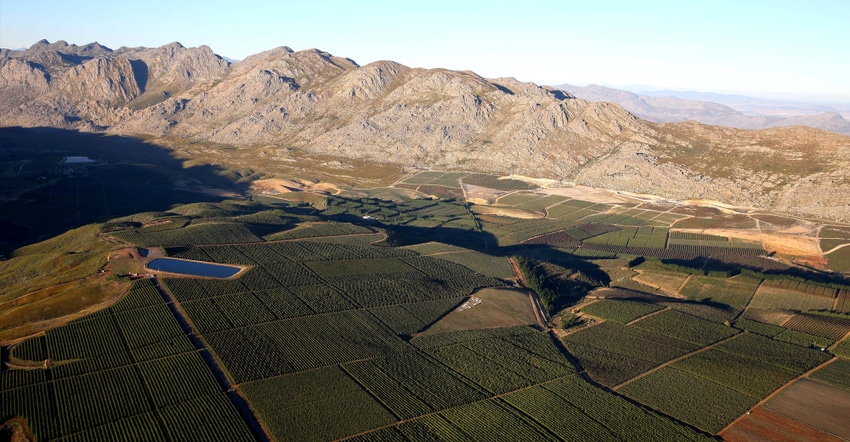
A journey into the challenges facing African agriculture and how agricultural journalists can help farmers succeed was tackled by more than 50 participants in Pretoria, South Africa, prior to the 2017 IFAJ (International Federation of Agricultural Journalists) Congress.
The issues were framed up by a farmer organization, by public and private industry, and by working agricultural journalists from South Africa and other countries. Then participants worked in small groups to provide opportunities to agricultural challenges in Africa.
Agricultural challenges
The first speaker, Theo de Jager, is a farmer and leader in the Pan-African Farmers’ Organization – a national grouping of five sub-regional networks across Africa that aim to support family farms and fight for the interests of small farmers.
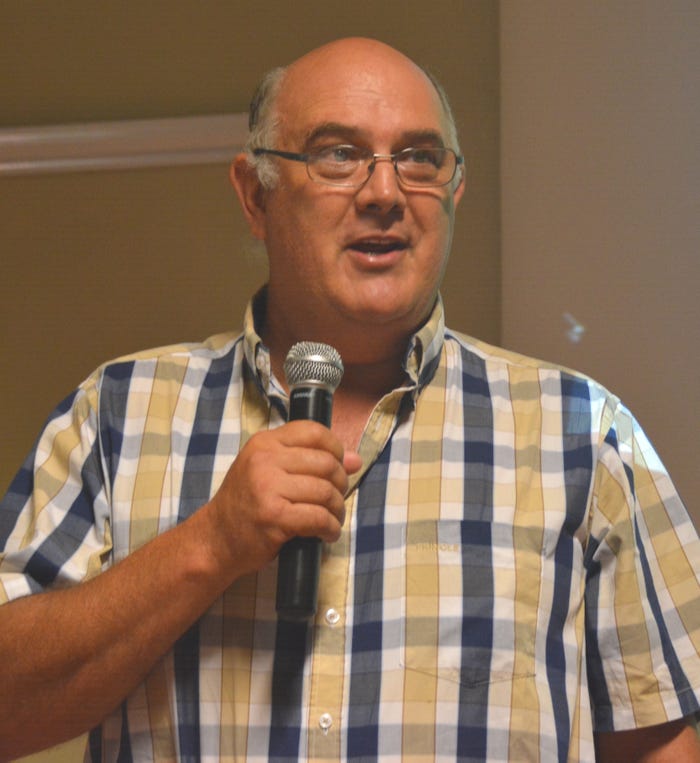
Jager emphasized how the government, the Africa Union, is not following or supporting agriculture’s growth, in farmer organizations and agribusiness value chains that have seen big growth since 2010. “The African Union cannot show the value of the government money, and its impact on farmers. But we are all to blame, including journalists, as we need to ensure that politicians do their part,” he said. “We need strong leaders.”
Jager cited how their continent is most vulnerable to extremes in weather, which is why they have been an outspoken leader in the fight to address real climate change.
He is also concerned about the lack of youth interest in farming, which is a challenge because the current paradigm of smallholder farming is a poverty trap. “There is nothing romantic about it; just do the math yourself,” Jager said. According to FAO, the average production area in Africa is less than 1 hectare (about 2.5 acres). The average maize (corn) yield is less than one ton per hectare (about 15 bu./acre). The average price for maize on the continent is just below $190 per ton. The average wage on the farm is $190 per year, or 50 cents per day. Who wants to do work like that?”
However, his vision of the future is bright. “This continent has everything that money cannot buy – the soils, the open spaces, the underutilized land, the water, the best average climate of all the continents of the world,” Jager said. “If there is one place that can have a revolution in agricultural productions over the next few years…it is Africa. What we need are things that money can buy – the expertise, the technology, the markets, the infrastructure.”
Importance of journalists
Jager believes that trained agricultural journalists are needed to help move African agriculture forward. He wants to promote profitable farming, which is the only farming that is sustainable in the world. “You (journalists) must make it attractive to the cream of the intellectual crop – amongst youngsters. We need them in agriculture. And there’s nothing as sexy as profitability,” he adds.
He wants journalists to be the mirror “so that all the stakeholders in the industry can look at themselves – and improve ourselves.” Jager said the technical advice is not enough, as farmers need expert opinion about the advice, what does it mean for me, and how do I need to adapt.
He believes that agriculture – not manufacturing, mining or tourism – is the sector of the economy that can “help Africa slay the dragon of poverty and hunger. “If you can help us sell this dream, where there’s a proper living for all, that’s the kind of wealth we want to create.”
Industry wants investment, partnerships
Kinyua M’Mbijjewe, Syngenta’s head of corporate affairs in Africa and the Middle East, agreed with Jager that more investment in agriculture is key. Syngenta, through its Good Growth Plan, is working to improve the sustainability of agriculture across the planet.
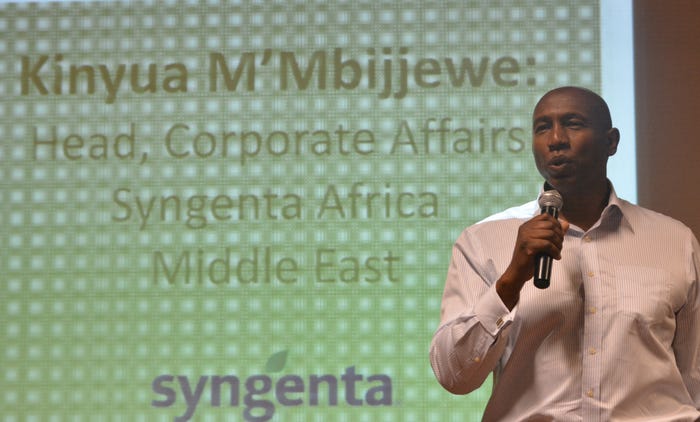
“It is time for a new narrative, as Africa spends only 6% of its total budget on agriculture. Until that changes, nothing will change,” he said.
M’Mbijjewe believes greater communications with policy makers are needed to increase spending on R&D and Extension, “because only then will it become a viable and attractive industry to investors who begin to see a potential and viable value chain”.
To move things forward, M’Mbijjewe said farmers need a larger voice to convince the urban gatekeepers of society that traditional ways of farming won’t work. Technology adoption is needed so farmers can double or triple their productivity, as well as improve quality and timeliness to market, he said.
As for Syngenta, M’Mbijjewe said they need partnerships – with farmers, research companies and banks who can think creatively beyond a 15% interest rates, as inventive finance is needed. And he agrees with Jager that more partnerships are needed to build a youth movement in agriculture, in order for Africa to succeed.
More Fertility Needed
Scott Angle, President and CEO of International Fertilizer Development Centre, discussed their work to help promote proper fertilizer use. IFDC has 1,000 employees in 23 countries, with 85% of their work done here in Africa.
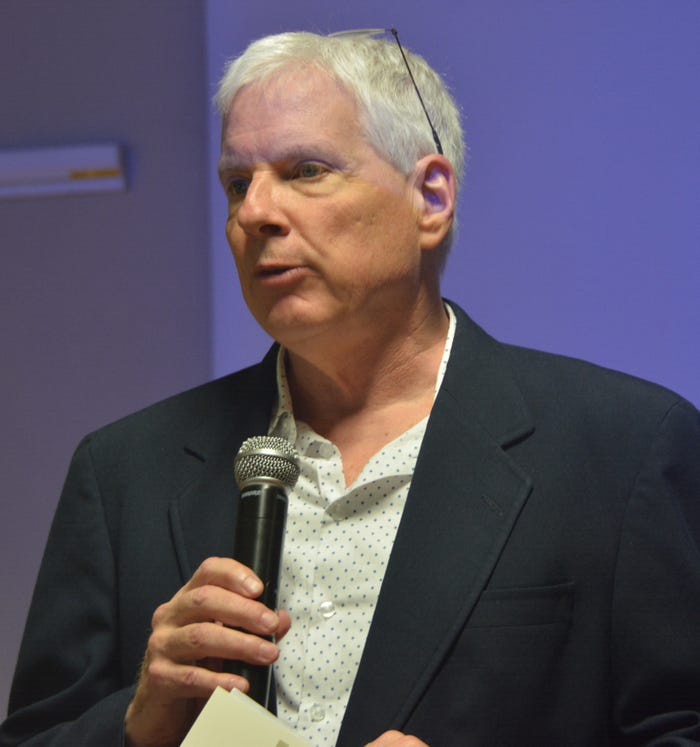
Regarding crop production, Angle said the average African farmer uses only 10% of the needed fertilizer, compared to producing average yields in other places of the world. “There is good water here, good soil, good natural resources, good labor – so why are yields so low? There are a lot of reasons for that, but fertilizer is a main reason. We must increase food production in a big way,” he said.
As IFDC has seen in many under-developed and developing countries, no nation will ever improve itself until agriculture is efficient. “And it won’t happen with smallholder farmers. There’s nothing romantic about smallholder farmers, as this hard, back-breaking work is not a preferred life for anyone,” he said.
Angle believes good agricultural journalists are needed to explain the value of technology – not just to farmers, but to stakeholders and politicians as well. To move agriculture forward, we need more young people in the ag profession. “There are programs underway to help this, but much more is needed,” he said.
Information delivery remains a challenge, as only a few countries have a viable extension program. “Some educators are doing a disservice to the country by presenting slanted views. All sides of the debate are important for farmers to see,” Angle said. Farmers must be shown the value of these practices through good stories, photos, and interviews. We have field days throughout the continent, so we need journalists to be multipliers of this news.
Angle said he was proud to help sponsor this Africa Forum (along with AGCO, AAEA, and Syngenta) because this is a good step to keep agricultural journalism growing.
He believes there is disconnect between scientists and farmers, and ag journalists can play a strong role here. “Journalists should get to know scientists, know NGOs like mine, and reach out to each country. There’s no doubt ag journalism is a difficult job – being objective on one hand, but also having an obligation to deliver information to the farming community, in my opinion. It’s no easy task working with all sides, but this continent needs such information,” Angle said.
Journalist challenges in Africa
Three agricultural journalists in Africa offered their views on the challenges and opportunities of covering agriculture in their respective countries.
Ag journalist Inoussa Maïga, the founder of AgriBusinessTV, launched the first youth in agribusiness WebTV in Africa to promote how youth are becoming agricultural entrepreneurs. He is in second term as President of Association of Ag Journalists and Communicators in the west Africa country of Burkino Faso.
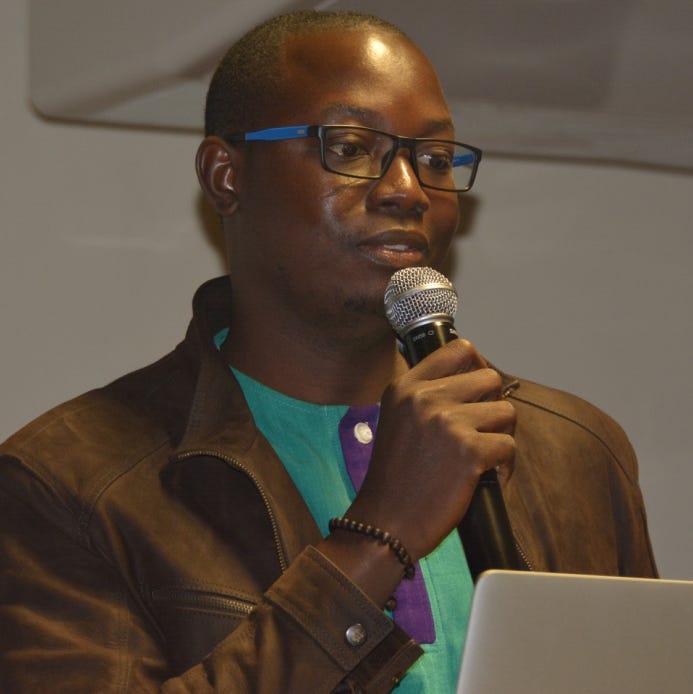
Maïga cited economic resource constraints as a main challenge. “It is costly to go to the rural areas to cover agriculture, and many journalists lack the appropriate equipment to do the job.” He also cited a lack of interest in agriculture by many media outlets, unless a minister or a president is visiting farms, or there are food issues. One positive he cited was good local radio coverage of agriculture, but the work doesn’t always meet quality requirements due to lack of agriculture training. And once these “occasional ag journalists” become more trained, they move up to larger radio stations, with reduced agriculture coverage.
Maïga would also like to see their journalist guilds become more specialized – among the 15-20 members dedicated to ag journalism – instead of 50-100 members who rarely cover agriculture.
Regarding opportunities, Maïga cited that ag journalists should contribute “news that benefits agriculture, not just raise awareness of problems in the sector.” He did cite progress with his Agribusiness TV to reach youth and build community in 11 African countries with positive stories that show how agriculture can be a great career, told through young farming entrepreneurs.
The second agricultural journalist at the Africa Forum, John Ininahazwe, tries to cover farming in the east Africa countries of Burundi, Rwanda and Uganda. However, freedom of the press is questionable at best. He has been intimidated, arrested and jailed, having to flee his home in Burundi for Uganda, where he said he won’t be intimidated to quit because of his passion to continue reporting on agriculture.
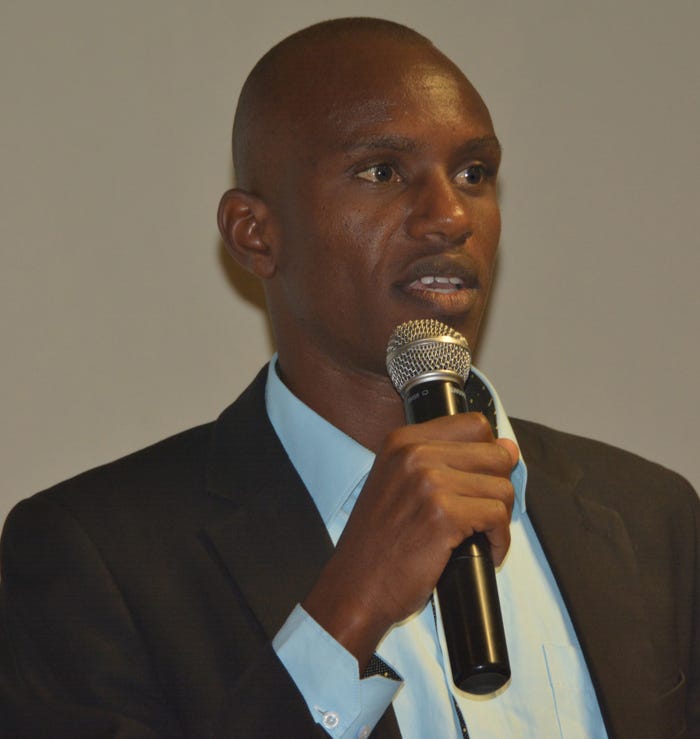
He strives to serve farmers, in the absence of extension education, to help increase crop and livestock production knowledge that will fight hunger. But Ininahazwe believes the role of agricultural journalists goes beyond that, to be a voice for farmers, even conducting advocacy programs toward decision makers to influence issues. “Journalists can act as intermediate tool for farmers and researchers, as they need to be involved in the designing of agricultural programs,” he said.
Radio and mobile phones play key roles to reach farmers with information in Africa, as well as provide programs that give farmers a voice to express themselves on the air and heard by a wider audience.
Ininahazwe cited similar ag journalist concerns as Maiga – more training is needed for improved reporting on agriculture and science; more local ag journalists are needed; more forums where ag journalists can engage with policymakers; and more reporting that truly helps farmers understand agricultural research.
Ministry of Ag Information
The third journalist on the panel, Friday Phiri, is an award-winning agriculture and climate change journalist in Zambia. He currently works as a District Ag Information Officer for the National Agricultural Information Services (NAIS) within the Zambia Ministry of Agriculture. “But what I say here represent me, not my government,” he said.
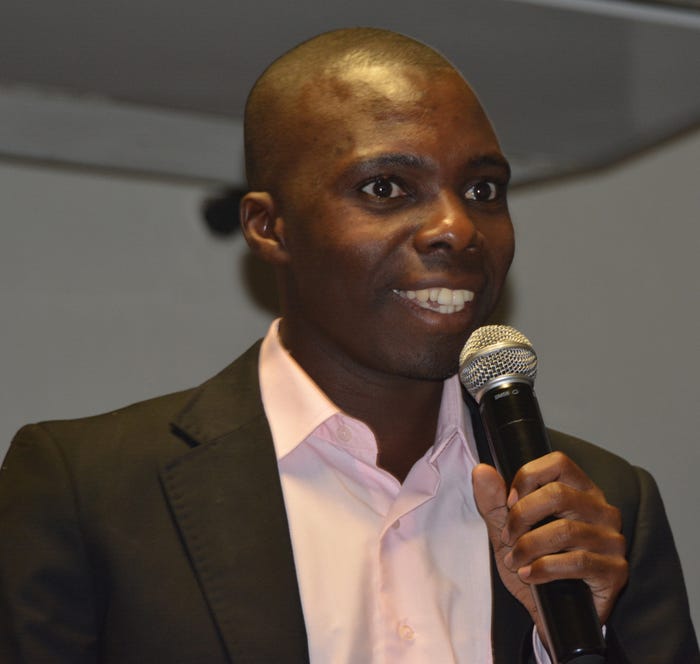
He described Zambia farmers in three categories: smallholder, medium and large-scale farmers. Smallholder is the majority, approximately 75% of the people, or 1.47 million households that represent 9.3 million people. Smallholders are classified into three categories (1 hectare = 2.471 acres):
· Category A - 0 to 2 hectare farmers that produce staple crops especially corn, with occasional marketable surplus.
· Category B – 2 to 5 hectares.
· Category C - 5 to 20 hectares.
The medium and large-scale farmers are just a small fraction of the farming community, but they produce various crops for both local and export markets.
The potential for growth in Zambia is staggering, said Phiri, with over 750,000 square kilometers of land (185.3 million acres), massive endowments in surface and subsurface water resources and a population density of just 19 people per square kilometer. The country is positioned to become the breadbasket of the southern and central African regions.
Phiri said Zambia has a vibrant media industry with relative freedom of the press. However, media coverage of agriculture is at a paltry 4%, yet agriculture makes up 34% of Sub-Saharan Africa’s GDP and 40% of the region’s exports, plus 70% of the total employment.
Why lack of agriculture coverage? Phiri said financial aspects and lack of agricultural journalist training investment are major hindrances to more coverage. The money problem is two-fold: journalist low wages push them to higher-paying company jobs, and political coverage is often chased instead of ag reporting due to politicians offering freebees to journalists. At another level, Phiri said money influences editorial choices and priorities. Most media owners/editors would rather cover a political breaking story that requires fewer resources and easier sales. They also cite huge costs going into rural areas to cover agriculture, as well as time and expense to train journalists in agriculture, since few colleges and universities offer specific agricultural journalism courses.
Another challenge Zambia faces, like many African countries, is a rural-urban disconnect between the poor in rural areas and the middle income and wealthy urban residents. City dwellers have a higher chance of getting a good education with higher possibilities of getting formally employed.
To face these challenges, Phiri believes private agricultural businesses like Syngenta, Monsanto and Pioneer should lead the process to grow agricultural journalism. It should not be left for the government, since their decisions are often more politically motivated, while the farmers’ decisions are based on business.
Phiri suggested that private sector companies could help fund agricultural news supplements in daily newspapers, working with more than 100 NAIS district government agricultural news agency branches all over Zambia, for example. It would encourage a lot of young agricultural journalists, he said.
He ended his passionate talk by emphasizing that information sows the seeds of prosperity and without access to it, farmers are at a disadvantage for the future. “Food is life. Food comes from agriculture. Therefore agriculture is life. Show me someone who does not eat and survives,” he adds.
Editor’s note: CSD Editor Kurt Lawton attended the recent 2017 IFAJ (International Federation of Agricultural Journalists) Congress in South Africa. This piece is a look at the current state of journalism and agriculture in numerous countries across this huge continent.
About the Author(s)
You May Also Like






